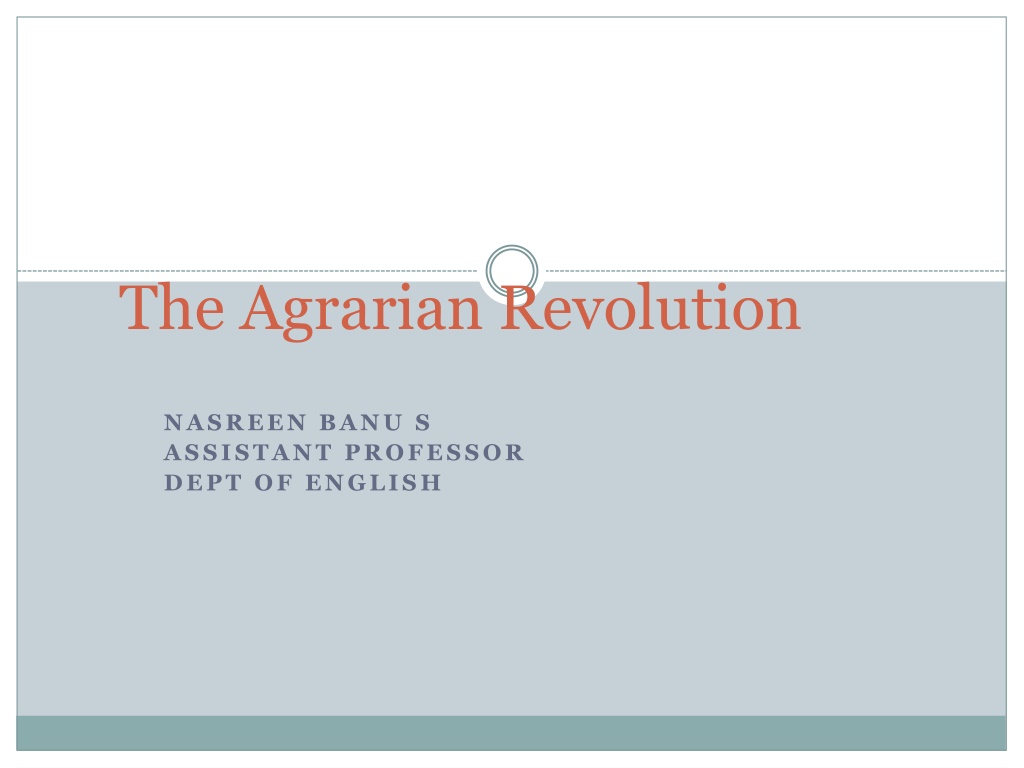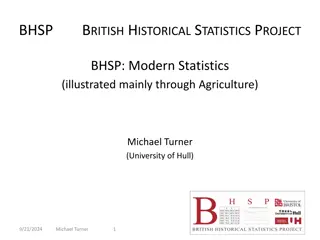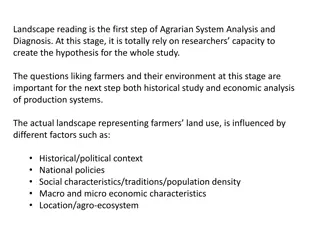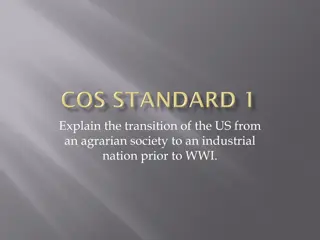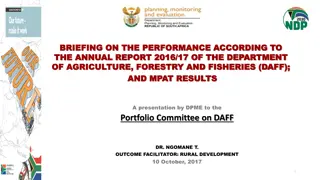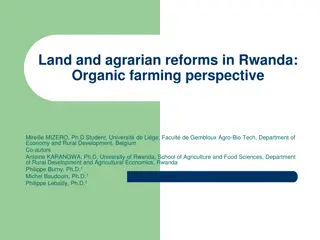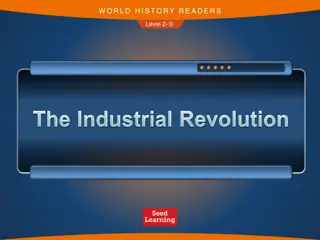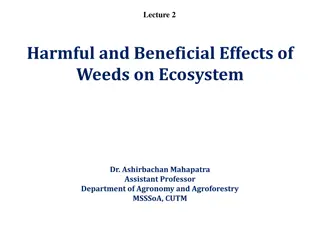The Agrarian Revolution and its Consequences in British Agriculture
The Agrarian Revolution in Britain brought significant changes to agricultural practices, shifting from the traditional Open Field System to Enclosure. Population growth, wars, and innovations drove the need for change, leading to larger, more efficient farms but also causing rural poverty and loss of livelihoods for many agricultural laborers. Enclosure Acts concentrated land in the hands of wealthy landowners, marking the birth of modern farming but also fueling the rural-urban drift.
Download Presentation

Please find below an Image/Link to download the presentation.
The content on the website is provided AS IS for your information and personal use only. It may not be sold, licensed, or shared on other websites without obtaining consent from the author. Download presentation by click this link. If you encounter any issues during the download, it is possible that the publisher has removed the file from their server.
E N D
Presentation Transcript
The Agrarian Revolution NASREEN BANU S ASSISTANT PROFESSOR DEPT OF ENGLISH
System Before Before the Agrarian revolution food was produced using the Open Field System Crops were grown on strips of land in large open fields Tenant farmers rented strips of land from local landowner Significant sections of land were designated as common land on which tenants and agricultural labourers had rights to graze their livestock Crops were rotated using 3 Field system one year of wheat, one year of barley (oats), one year of fallow (left to meadow to recover) The Open field system was very inefficient but had served Britain s needs for hundreds of years Village life was reasonably secure and predictable
Pressure for Change Population Growth: Between 1750-1820 British population trebled from 7 million to 21 million the old system could not feed that many people French Wars war with France from 1793 reduced the amount of important food to near to zero, shortages got worse and prices rose An Age of innovations ideas from the industrialising areas began to have an influence e.g. Mechanisation, economies of scale Greed and opportunity landowners saw a unique opportunity to enrich themselves by adopting new practises
Enclosure The main feature of the Agrarian Revolution was the Enclosure of the land joining the strips together into large, hedged off fields to take advantage of technology and innovation Enclosure began as a voluntary process as large to medium sized landowners saw the mutual advantages of banding together to make money. Eventually Enclosure had to be regulated by Parliament as conflicts between larger landowners and small landowners and tenant farmers increased The largest landowner in an area would push an Enclosure act through Parliament joining up all the local strips with small amounts of compensation for those who lost out Between 1760-1820 there were 4,000 separate Enclosure Acts illustrating the landed nature of Parliament
Consequences Much larger farms grow more food, able to innovate, wealthier so can invest, better disease control and weed control. Massive increase in food production birth of modern farming All common land disappeared and agricultural labourers lost their rights and their livelihoods, increase in rural poverty many joined the rural urban drift to seek their fortunes in the new towns Agricultural land more and more concentrated into the hands of the wealthiest landowners. Small farmers forced by Act of Parliament to sell to large landowners at low prices and inadequate compensation
Other Innovations: Jethro Tull In 1701 Tull invented a seed drill which was a horse drawn machine that planted seed in straight rows and at a uniform depth. In 1714 Tull developed a horse drawn hoe that made it much easier to get rid of the weeds between crop rows. This replaced hand hoeing.
Turnip Townshend Devised a way of improving on the old wheat-barley-fallow rotation by getting rid of the fallow year Townshend introduced a new 4 year sequence wheat- turnips- barley-clover. Turnips as a root crop use different nutrients in the soil and both turnips and clover actually introduced nutrients helpful for wheat and barley. Turnips and clover provided valuable winter cattle food, cutting the need for grazing and making it possible for farmers to keep larger and larger herds
Robert Bakewell Robert Bakewell of Leicester was the first farmer to introduce selective breeding of cattle.. Using selected types of cattle and breeding them with others to maximise their advantages e.g. Milk yield and meat yield Thanks to his influence cattle weighed up to 3X what they had 100 years earlier and specialist breeds started to emerge for particular products His ideas were developed further by the Colling brothers
Arthur Young In the 1770s and 1780s Young travelled many thousands of miles observing the process of change and encouraging it. He edited the journal 'The Annals of Agriculture'. In 1793 Young was appointed to be the Secretary to the newly formed Board of Agriculture and made a big contribution to spreading the innovative ideas of the Agrarian Revolution far and wide.
Effects of Agrarian Revolution The increase in agricultural production and technological advancements during the Agricultural Revolution contributed to unprecedented population growth and new agricultural practices, triggering such phenomena as rural-to-urban migration, development of a coherent and loosely regulated agricultural market, and emergence of capitalist farmers.
Significance of Agrarian Revolution The Agricultural Revolution in Britain proved to be a major turning point, allowing population to far exceed earlier peaks and sustain the country s rise to industrial pre-eminence. Although evidence-based advice on farming began to appear in England in the mid-17th century, the overall agricultural productivity of Britain grew significantly only later. Towards the end of the 19th century, the substantial gains in British agricultural productivity were rapidly offset by competition from cheaper imports, made possible by the exploitation of colonies and advances in transportation, refrigeration, and other technologies.
Social Impact The increase in the food supply contributed to the rapid growth of population in England and Wales. The rise in productivity accelerated the decline of the agricultural share of the labour force, adding to the urban workforce on which industrialization depended. The Agricultural Revolution has therefore been cited as a cause of the Industrial Revolution. As enclosure deprived many of access to land or left farmers with plots too small and of poor quality, increasing numbers of workers had no choice but migrate to the city.
